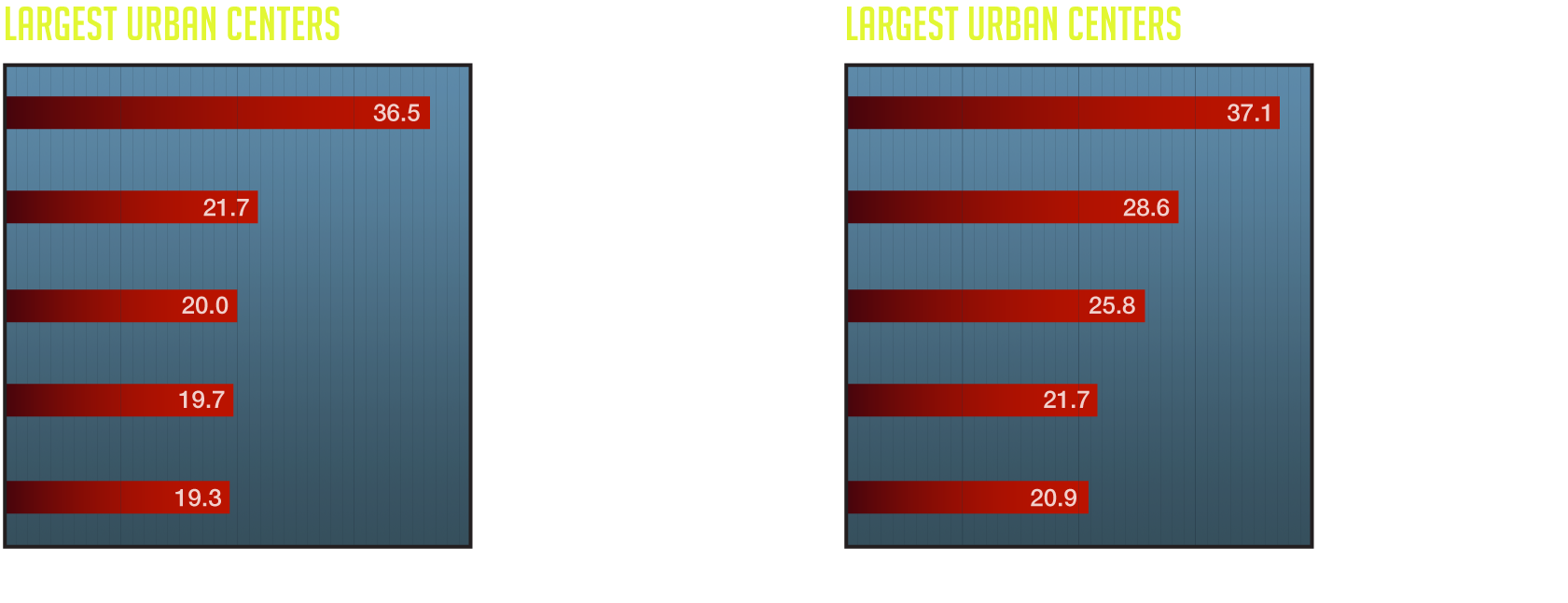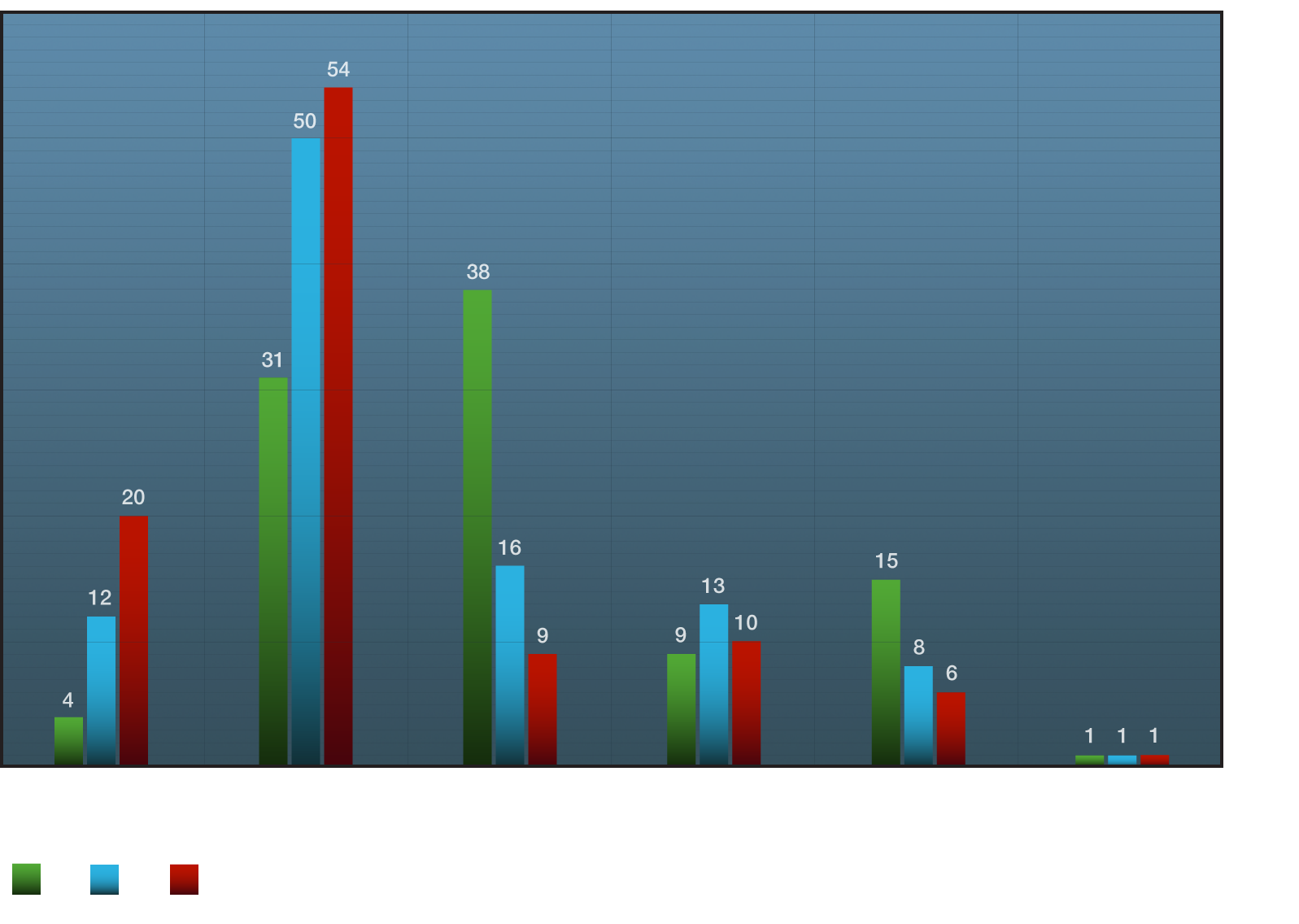What Country Is Home to Nine of South America’s 20 Largest Cities?
Urbanization and the Megacity
Across the world and in a short corporeality of time, we've given up the tractor for the city bus, the open landscape for one of brick and mortar. We are at present an urban planet. In fact, by 2008 over 50 percent of the global population was living in urban areas. It was 3 percent in 1800. Throughout history, cities have attracted people as centers of culture, organized religion, learning, and economic science. Looking back, the first moving ridge of urban migration took identify in what are today's more developed countries, especially in Europe and North America. But looking ahead, 90 percent of the future urban increase is expected to have place in Asia and Africa, and it is projected that more than than two-thirds of all people will be calling cities home by 2050.
Urbanization is often linked with economics – increased job opportunities, a centralized market, better pay and higher individual wealth have all drawn people into cities. And for a long time, these pull factors are what caused cities to grow. The Industrial Revolution caused a shift from agriculturally based societies to industrial, and thus geographically centered, societies. Merely that dynamic is changing. Today, nearly urban growth is natural increase – due to more births than deaths amongst those already dwelling house in cities. Additionally, formerly small settlements are beingness reclassified as urban areas as the populace living there grows from inside.
Implications of Growing "As well Fast"
Depending on cities' ages and locations, there is much variation in wealth and infrastructure. Many of the newer urban areas, located in Latin America, Asia and Africa, have an entirely different look, feel, and outlook than their older European or N American counterparts. How fast an expanse grew, or is growing, is a key component.
When a city grows at a manageable rate, which is often considered roughly one percent annually, its infrastructure can keep pace with an increasing population and its demands. Necessities such as roads and public transportation, appropriate sewers and water treatment facilities, clinics, schools and housing have time to be planned and built aslope the increment in homo numbers. The take a chance of fast urban growth, especially in an economically strained country, is that the necessary infrastructure often cannot expand fast enough to keep up with residents' needs. Without infrastructures in identify to provide bones needs, residents can be forced to create their own provisions with whatsoever is available.
The Rise of Slums
In less developed countries, densely populated slums form both on the edges and inside the largest cities. Due to a poor economy and weak infrastructure, cities such as Mumbai, Bharat do not take the ways to back up the overwhelming urban population. Co-ordinate to the 2018 UN Globe Urbanization Prospects Report, Mumbai ranked every bit the seventh largest metropolis in the globe, with 20 million people in the entire metropolitan surface area. Even more striking, over one-half of Mumbai's metro residents live in slums surrounding the urban center, causing huge public wellness, environmental, and land apply bug.
Slum dwellers survive with practically no sanitation, h2o, urban amenities, employment, or security, and roughly one-seventh of the earth'south population lives under these conditions. The lack of running h2o and sanitation, plus malnutrition and inadequate housing, leads to mortiferous weather condition in the slums and shantytowns that surroundings many cities in Africa, Asia, and Latin America. The spread of HIV/AIDS and other infectious diseases in areas where and then many people live in such shut physical proximity is a disquisitional public wellness outcome for urban areas throughout the developing earth. When combined with loftier unemployment rates and inadequate schools, these public health issues create a poor quality of life for many of the urban center's residents.
The Emergence of Megacities
The urban shift over time has led to the emergence of the megacity – a city with a population of 10 1000000 or more. New York City and Tokyo were the first known megacities, both reaching an urban conglomeration of over x meg by the 1950s. But today they are far from lonely in their size. In 2018 at that place were 33 megacities across the planet – from Sao Paulo, Brazil to Lagos, Nigeria and London, England to Shanghai, China – and all major global regions except Oceania are marked with megacities.
Almost of the cities that take reached the 10 million marker in recent years are located in Asia and Africa. In fact, it'due south where six of the eight newest megacities tin exist found and where nine of the 10 projected 2030 megacities will exist located. These regions are too dwelling to the fastest growing megacities. The population of Kinshasa, capital of the Congo-kinshasa, has doubled roughly every 5 years since 1950. From 2010 to 2015, Kinshasa's population grew past over 23 percent, and today over half of the more than 13 million residents are under 22 years old. A combination of factors has led to this growth including migration from rural areas, loftier fertility rates, and widening of the city's boundaries. The population is outpacing most all support structures in the metropolis where the threat of food shortages, traffic congestion, and bereft education facilities have get a stark reality.

Environmental Pros and Cons
A large urban population may seem environmentally troublesome with cities viewed as a disruption to the natural earth. Merely environmentalism and urbanization are not incompatible. Dense urban areas have a much smaller ecological footprint – many people live in apartments or smaller connected houses rather than ranch-mode homes in sprawling neighborhoods. Multifamily dwellings have the added benefit of being more free energy efficient and they require less resources per person. Cities are too walkable and have public transportation options that tin can make cars less of a necessity. And above all, densely populated areas make it possible to protect other open spaces to serve as wildlife habitat, farmland, conservation areas, or oxygen-producing forests.
Only of course, at that place are ecological downsides to cities also. Concentrations of people hateful concentrations of pollutants and trash. Cities produce up to 70 percent of global CO2 emissions and smog is condign a common feature in many urban landscapes. Big swaths of continuous pavement forbid water drainage and heave temperatures. Without proper infrastructure, cities also run a risk having waste – both trash and human being waste matter – clogging waterways and causing damage. And with cities across the globe producing more than two billion tons of waste matter annually, that's a lot for one area to handle.
Planning an Urban Future
It is predicted that most future urban growth will happen in settlements currently home to between 100,000 and 250,00 people, and if this is to exist done sustainably, planning is a must. Future high-growth areas crave strategic urban planning individually tailored to a city'southward history, culture, value organization, and other specificities; a single cookie-cutter approach won't work, nor will the plans of the 20th century. Merely by keeping an centre towards social justice concerns, natural resources utilize, environmental hazards, and other issues of mod cities, urban plans can help ensure the wellness and well-beingness of tomorrow's city dwellers.
distribution of earth urban Population by area

Source: https://worldpopulationhistory.org/urbanization-and-the-megacity/
0 Response to "What Country Is Home to Nine of South America’s 20 Largest Cities?"
Post a Comment